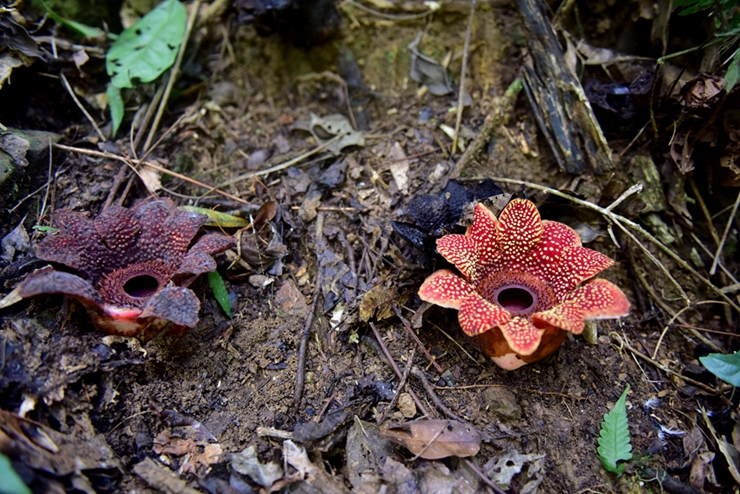Sapria himalayana Griffith. (Rafflesiaceae), a root parasitic plant, is one of the lesser known and poorly understood taxons, which is at the brink of extinction due to incessant human interventions in the natural forest environment. It is rare and a botanical curiosity, and sensitive to human intervention. For many years, nobody has ever seen the bloom of Sapria himalayana in natural habit in Xishuangbanna. According to Flora of China, Sapria himalayana is parasitic on roots of Vitis and Tetrastigma. It’s distributed in southeast Tibet, South Yunnan, northeast India, Myanmar, Thailand, and Vietnam.
In late December, researchers from Xishuangbanna Tropical Botanical Garden (XTBG) found the blooming Sapria himalayana in nature and called people to care and protect this rare parasitic root.
The flowers of Sapria himalayana are 20 cm across, unisexual, bright red in color covered with sulphur-yellow spots. They appear above the ground and have a putrid odor. Flowering shoot is short, erect and unbranched. Buds are globose and have white and pink bracts. The flowering and fuirting occur during winter (december to February). The flower remains in its blooming stage for 2-3 days and after that it slowly splits open and becomes dark in color and subsequently decomposes slowly. Fruits are swollen and crowned with perianth. The seeds are of the size of a grape fruit and blackish-brown in color.
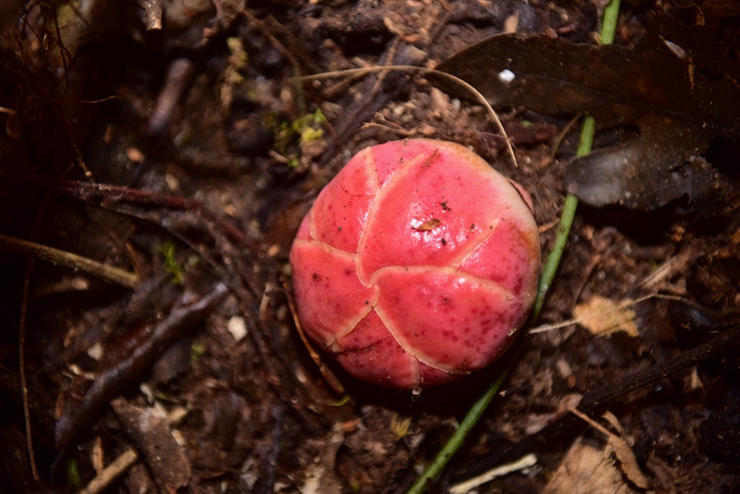
Globose bud
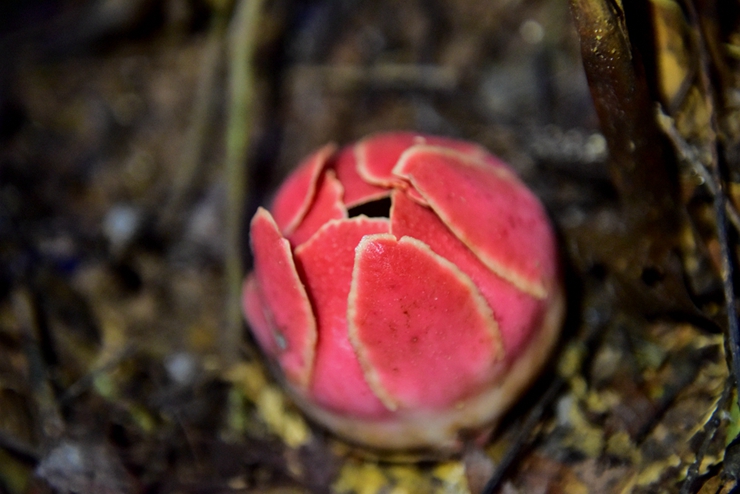
Bub opens
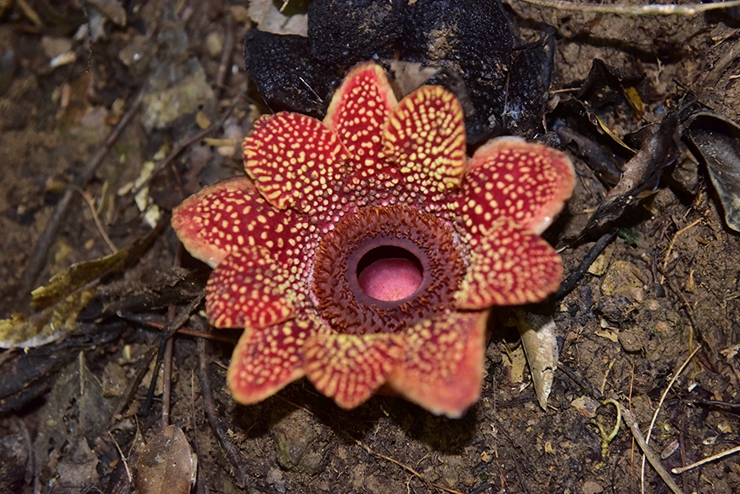
Blooming flower
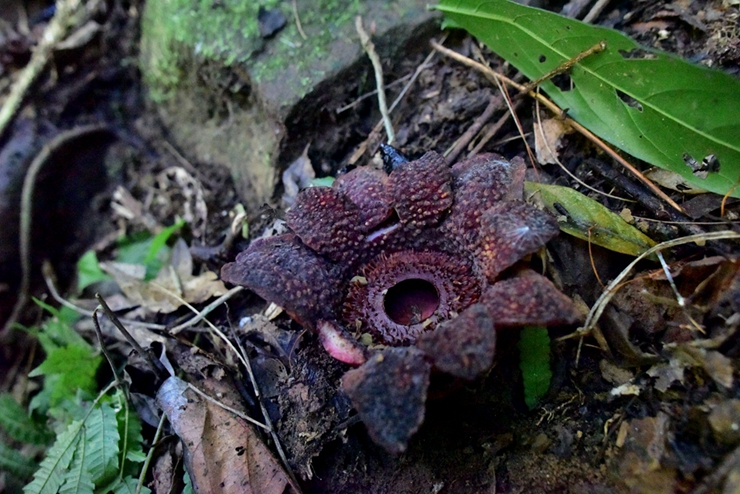
Decaying flower
